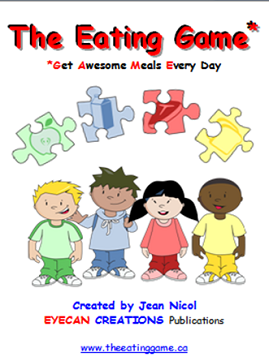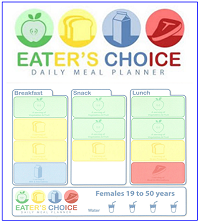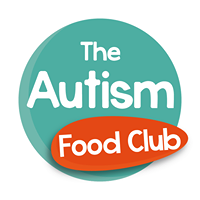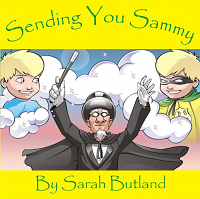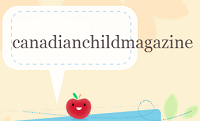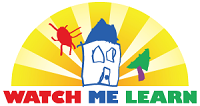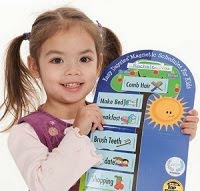If you have a child on the Autism Spectrum you have likely heard of social stories. If not, then I would urge you to do so. We all, at some time, struggle in our efforts to help our children with ASD to understand, manage and interact with others in social situations.
Although every person with ASD is unique they certainly all, to some degree, have challenges with communication and social skills, which of course so very interrelated themselves!
When we use verbal communication to teach/explain anything we are often confronted by the difficulties the learner has with processing language; further complicated by the fact that we seldom say it the same way twice. And how often does it involve several different ‘teachers’? (mom, dad, siblings, grandparents, caregivers, therapists, teachers, educational assistants etc) This could be two (or many more) different messages for someone with ASD. We also know how much repetition might be needed before a new concept might be well understood. If we use a social story then the message will always be the same. The words don’t change and it doesn’t matter who is reading the story, the message is the same. Of course the person with ASD may themselves be reading the story – the message is always the same!
How often have you said, "Why does he not understand, we have all told him over and over, so many times?" How many "different" messages might this have been? How frustrating would that be for someone with a communication disability?
I say ‘the person with ASD’ as opposed to ‘the child with ASD’ because many adolescents and adults benefit from using this strategy. The format or presentation may change. For a young child you may use pictures (photos, drawings, graphics) with just a few words. This can be adapted as needed. For many, just words will be the most appropriate format. The size can vary from pages in a 3 ring binder to ‘business card’ size. A collection of ‘stories’ can be kept in a small business card holder for quick reference! They can be done on the computer, burned on a CD or DVD; recorded on a video tape; recorded on an audio tape for use by a person who is visually impaired; written in Braille; done in a talking photo album. The possibilities for format and presentation are endless.
For guidance on how to write the stories and how to present them I would suggest you search for information on Social Stories by Carol Gray. From my own experience, having written hundreds for the past 14 years I would make a few suggestions:
• Use only as much language as is necessary and be POSITIVE
• Use language you know will be understood; write for the user!
• Involve the user and/or other caregivers if appropriate
• Make sure everyone understands why and how it will be used
• Read the story several times a day if possible
• Read until no longer needed, then store for future reference!
Just recently, a young adult with ASD was asking me questions about how to handle an awkward social situation. As we talked we decided to write a social story (on the back of a business card). She then decided to write it down for the other person involved who was also challenged by the situation.
A social story is perhaps the most powerful teaching strategy I have ever used! I was a special education teacher and autism consultant for 22 years; retired seven years and still writing them!
Tuesday, July 21, 2009
Monday, July 6, 2009
NEW ! Eater's Choice for Children
In response to requests, we have created Eater's Choice Daily Meal Planners for Children. We will now add two more packages to this line of products: Children ages 4 - 8 years and Children ages 9 - 13 years.
Many children with autism respond very positively to visual supports and as Temple Grandin has explained so well, many think in pictures! So The Eating Game is a solution that will support these children in developing much healthier eating habits.
Now, for many children with autism (and those without autism of all ages!) visual supports can be needed and valuable but can be written words rather than pictures. So now the Eater`s Choice line of products will be an excellent tool for them to improve their eating habits!
It is always helpful when developing new products to get feedback from others - Thanks to those of you who contact us with comments and or requests. We also appreciate any testimonials that come our way and of course a picture to support your words would be great too! Let`s us know how we are doing.
Many children with autism respond very positively to visual supports and as Temple Grandin has explained so well, many think in pictures! So The Eating Game is a solution that will support these children in developing much healthier eating habits.
Now, for many children with autism (and those without autism of all ages!) visual supports can be needed and valuable but can be written words rather than pictures. So now the Eater`s Choice line of products will be an excellent tool for them to improve their eating habits!
It is always helpful when developing new products to get feedback from others - Thanks to those of you who contact us with comments and or requests. We also appreciate any testimonials that come our way and of course a picture to support your words would be great too! Let`s us know how we are doing.
Labels:
autism,
healthy eating habits,
healthy meals,
nutrition,
picky eaters
Is Autism a Disease or a Disorder?
Many of us who have been supporting persons with autism don't think it is a 'disease' we can cure. It is a 'disorder' that is adversely affected by things that can be cured: such as food allergies with a gfcf diet or hypersensitive hearing with a hearing aid that blocks most noise or acceptable strategies to deal with sensory overload such as using an exercise machine instead of flapping and spinning. Many of these 'symptoms' of underlying disorders/diseases can be treated and cured. Certainly if we can cure underlying illnesses it will be easier to teach needed communication and social skills to those who truly have Autism Spectrum Disorder.
If you couldn't communicate what you needed or wanted you would become very frustrated too. Maybe you might not even be able to figure out what the need is to start with because you are not understanding what is happening in the world around you, if you are even noticing it. Eventually you will communicate something, only it may not be in a very acceptable manner, thus a misbehavior! OOPs, that was a long way to describe some persons with autism!
Maybe it does not take 'rocket science' but we might have to be very creative in our efforts to find ways to help manage the disorder.
Often it takes many years of intensive therapy and we have found several effective ways to do that. However, the cost is often very prohibitive; one that often only the wealthy can afford. Also therapies may not be "one size fits all" so 1 year of 1 specific therapy may not be what is needed for all on the spectrum.
We do need trained therapists for sure, but they also need to be able to think outside the box too and have other training/knowledge/experience that will assist them in developing a program that meets the needs of this little person and their family. There is an assumption here on my part that we are providing therapy to a young child while teaching & supporting parents/caregivers the skills they need to deal 24/7! This is called EARLY INTERVENTION. So early in fact that it is done in the home because the child is not going to school yet. If we do this right, many or maybe most will not need intensive 1 to 1 support in school (another story).
We know that autism is a disorder and we were smart to call it Autism Spectrum Disorder. The 'spectrum' part tells us "one size does not fit all". We need to identify as early as possible when a team of specialists can assist in planning an individualized program plan to teach children and families how to treat what may need to be treated and to learn skills to bring order to the disorder. The greatest need will always be to provide a way to enable effective communication, which is a two way exchange remember, and then to teach socially acceptable behaviors/strategies. Now the person with autism will be able to manage to do all the things they have to do in the world of persons without autism! They will always be autistic but it will be more "invisible" and acceptable!
Perhaps those children we feel we have "cured" would have, in the past, have been diagnosed as having autistic tendancies or autistic like behaviors. We treat underlying diseases and we effectively change those behaviors and they are "cured". BRAVO to those who have managed to accomplish this for many children.
Now we must figure out how we can do what needs to be done for those who cannot be 'cured'. This may not be 1 in 150 children anymore but it will always be too many until we effectively address all their needs!
If you couldn't communicate what you needed or wanted you would become very frustrated too. Maybe you might not even be able to figure out what the need is to start with because you are not understanding what is happening in the world around you, if you are even noticing it. Eventually you will communicate something, only it may not be in a very acceptable manner, thus a misbehavior! OOPs, that was a long way to describe some persons with autism!
Maybe it does not take 'rocket science' but we might have to be very creative in our efforts to find ways to help manage the disorder.
Often it takes many years of intensive therapy and we have found several effective ways to do that. However, the cost is often very prohibitive; one that often only the wealthy can afford. Also therapies may not be "one size fits all" so 1 year of 1 specific therapy may not be what is needed for all on the spectrum.
We do need trained therapists for sure, but they also need to be able to think outside the box too and have other training/knowledge/experience that will assist them in developing a program that meets the needs of this little person and their family. There is an assumption here on my part that we are providing therapy to a young child while teaching & supporting parents/caregivers the skills they need to deal 24/7! This is called EARLY INTERVENTION. So early in fact that it is done in the home because the child is not going to school yet. If we do this right, many or maybe most will not need intensive 1 to 1 support in school (another story).
We know that autism is a disorder and we were smart to call it Autism Spectrum Disorder. The 'spectrum' part tells us "one size does not fit all". We need to identify as early as possible when a team of specialists can assist in planning an individualized program plan to teach children and families how to treat what may need to be treated and to learn skills to bring order to the disorder. The greatest need will always be to provide a way to enable effective communication, which is a two way exchange remember, and then to teach socially acceptable behaviors/strategies. Now the person with autism will be able to manage to do all the things they have to do in the world of persons without autism! They will always be autistic but it will be more "invisible" and acceptable!
Perhaps those children we feel we have "cured" would have, in the past, have been diagnosed as having autistic tendancies or autistic like behaviors. We treat underlying diseases and we effectively change those behaviors and they are "cured". BRAVO to those who have managed to accomplish this for many children.
Now we must figure out how we can do what needs to be done for those who cannot be 'cured'. This may not be 1 in 150 children anymore but it will always be too many until we effectively address all their needs!
Thursday, July 2, 2009
Why Is It Called A Game? It's Serious Business!
Do you do battle regularly with a child who won't eat a healthy variety fo foods? have you found something that helps you win the battles? Please comment below and share with readers ~ perhaps you can help others too.
It is serious business when a child will not eat a healthy diet. Who does not want their child to be healthy and able to learn and play well? So it is, when your child will only eat a few select foods that you worry. You try, but battles make it worse; you are really in a battle for control and unfortunately your child probably likes being in control right!
This is a serious business so you are wondering why I would invent a "game" as a solution. Well, I did invent it but I left the naming up to the 6 year old that I invented it for. He called it a "game" because it was fun! I agreed but with reservations until I realized that GAME could be an anacronym for G et A wesome M eals E veryday! That is serious stuff!
Kids like to have fun, so there you have it! They have fun planning awesome meals everyday using The Eating Game and you have a healthier, happier child who is in control, making good choices having a much more varied diet of foods from all food groups. In fact your child may soon be planning the basics of your family meals and getting everyone eating better! Now that's control! And the real bonus is that hopefully they have developed healthy eating habits that will last a lifetime. Amazing what can happen while you're having fun!
It is serious business when a child will not eat a healthy diet. Who does not want their child to be healthy and able to learn and play well? So it is, when your child will only eat a few select foods that you worry. You try, but battles make it worse; you are really in a battle for control and unfortunately your child probably likes being in control right!
This is a serious business so you are wondering why I would invent a "game" as a solution. Well, I did invent it but I left the naming up to the 6 year old that I invented it for. He called it a "game" because it was fun! I agreed but with reservations until I realized that GAME could be an anacronym for G et A wesome M eals E veryday! That is serious stuff!
Kids like to have fun, so there you have it! They have fun planning awesome meals everyday using The Eating Game and you have a healthier, happier child who is in control, making good choices having a much more varied diet of foods from all food groups. In fact your child may soon be planning the basics of your family meals and getting everyone eating better! Now that's control! And the real bonus is that hopefully they have developed healthy eating habits that will last a lifetime. Amazing what can happen while you're having fun!
Subscribe to:
Posts (Atom)
